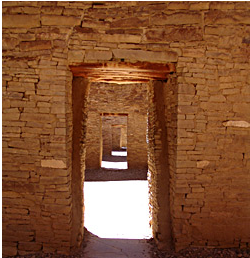Publication Date
7-1-2015
Abstract
The papers that comprise this dissertation all explore the intersection of material culture and social identity. The central theme of these studies is that social identity is actively created and maintained through the production, consumption, and discard of material objects. In the first paper, I examine the distribution of ornament styles and practices of adornment across the prehispanic Southwest in relation to traditionally defined regional and culture-historical boundaries. Jewelry items of similar forms are widely distributed across cultures/groups; however, specific practices in the use and deposition of ornaments are not random within particular sociohistorical contexts. In the second paper, I explore the relationship between identity and demographic reorganization through an examination of the extent to which Chacoan identity and practice, as demonstrated by the social values attributed to ornaments at Pueblo Bonito during the Chaco florescence, were maintained or transformed by the post-Chaco period inhabitants of Aztecs West Ruin. I argue that at Pueblo Bonito, ornaments were necessary in renewing the existing ritual-ceremonial order through the assembling of essential components of the natural and cultural worlds. It is proposed that these social values attributed to ornaments were directly cited at Aztec Ruin after the decline of Chaco Canyon as a central place in the San Juan Basin. The third study, published in The Pueblo Bonito Mounds of Chaco Canyon: Material Culture and Fauna, edited by Patricia L. Crown, focuses on practices of production, use, and discard of utilitarian gray ware ceramics from Pueblo Bonito. The attributes of the culinary ware pottery assemblage from the large middens at the site are consistent with household-level cooking activities. However, there is also evidence for suprahousehold feasting using large imported Chuska cooking vessels, which may have held special meaning through their associations with an important place on the landscape. This dissertation demonstrates that the materiality of social existence extends to all types of practice; people continually define their identities through activities and performances involving both commonplace and rare objects /materials.'
Keywords
Chaco Canyon, ornaments, utility ware, material practice, social identity, materiality, ritual
Project Sponsors
National Science Foundation Doctoral Dissertation Improvement Grant, the Hibben Trust, and the UNM Graduate Research Development Fund
Document Type
Dissertation
Language
English
Degree Name
Anthropology
Level of Degree
Doctoral
Department Name
Anthropology
First Committee Member (Chair)
Patricia L. Crown
Second Committee Member
Wirt H. Wills
Third Committee Member
James L. Boone
Fourth Committee Member
Barbara J. Mills
Recommended Citation
Mattson, Hannah Victoria. "Identity and Material Practice in the Chacoan World: Ornamentation and Utility Ware Pottery." (2015). https://digitalrepository.unm.edu/anth_etds/45

